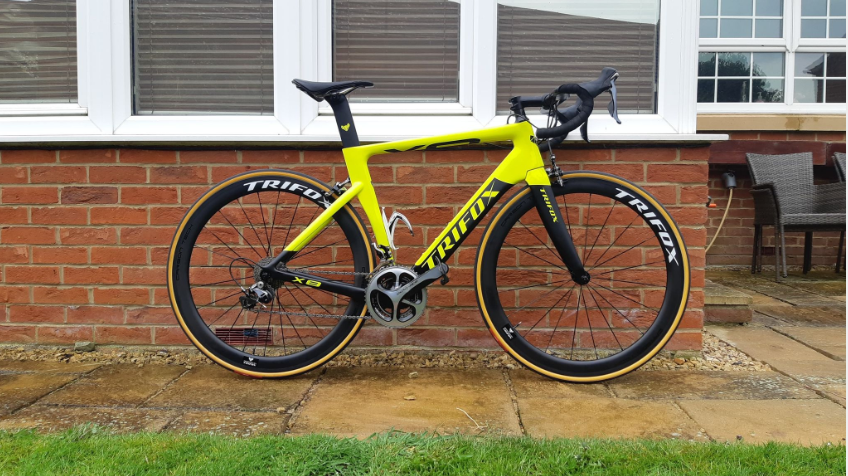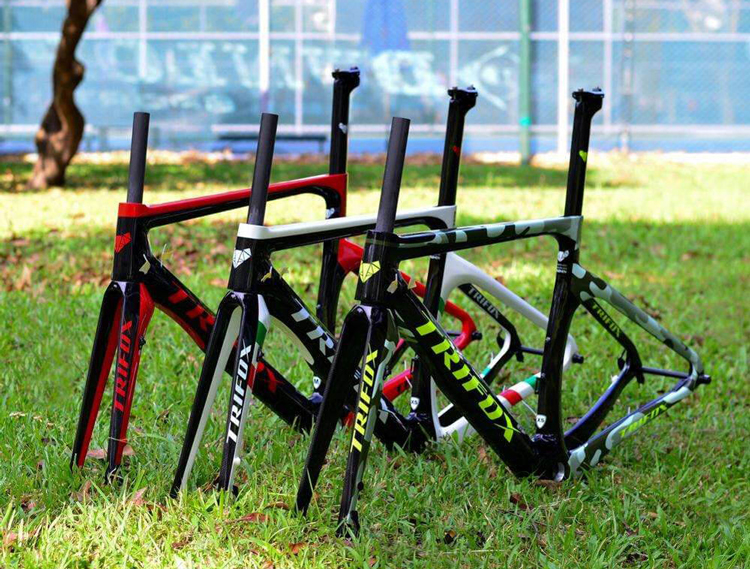Not everyone can go downhill like a professional cyclist, but at least you can optimize your downhill movements through some tips, increase your confidence and speed when going downhill!
If you can’t go downhill happily, why bother to ride up the top of the slope? When cyclists face downhills, many people will have an inexplicable sense of fear, but that’s okay, you might as well listen to our suggestions, then take your bike and try it out on a slope!

【Cycling Posture】
Imagine that you are cycling on a road bike. Lower your body as much as possible and try to get as close to your bike as possible. If you are not used to this posture and feel uncomfortable, then try a few more times. Until you get used to it. Because when you lower your body, the center of gravity will also become lower, so that when you go downhill at high speed, you can increase the stability of your bike. Of course, this posture is also easier to control the brakes, because the distance is closer, and the range of contact becomes larger. At the same time, try to keep your back in a straight line, and then lift your head slightly, so that you can more easily observe the field of vision in front of the bicycle.
【Route Selection】
If you want a better downhill experience, then choosing a suitable cycling route is very important. Of course, you can choose any mountain, any road is right, but the flatter the road means the faster the downhill speed will be, thus reducing the difficulty of the downhill. In addition, the rule of cornering is: take the outer road before entering the bend, take the inner road when entering the bend, and take the outer road when exiting the bend. According to this method, you can control the speed and ensure the maximum friction, so that you can pass smoothly when turning.
【Brake】
When it comes to speed control, it’s time to talk about braking and the timing of braking. When you are going downhill, remember to press the brake lever in advance before turning. In this way, when cornering, there is no need to brake to control the speed of the bike. This can increase the friction of the bike, because high-speed rotating wheels have better grip than slow-rotating wheels. In addition, when preparing to brake, you must remember to brake gently and continuously until you can feel the effect of the brake. Then gradually increase the force of the brake and slow down until you feel that this speed is sufficient for cornering, then release the brake, maintain the speed, and ride along the downhill route!
The main precautions for cornering in the above manual. But on the smooth road between the curve and the curve, you have to change your cycling posture. At this time, you can straighten your body slightly and prepare for the next curve. Even at this time, you can still be lazy. Step on the pedal a few fewer times and slow down until you regain your confidence. Be sure to maintain a steady breathing rhythm during the process and try to relax as much as possible. This will ensure that you are in good control of the bike, both physically and psychologically.
That’s almost it, let’s briefly summarize what I said above.
1. When going downhill, make sure that your posture is correct;
2. Press down the body as much as possible, keep your fingers within the controllable range of the brake at all times, and look forward;
3. When you pass the first turn, slowly ride to the outside road and prepare to brake. When braking, you must ensure that the speed is low enough to facilitate your cornering;
4. When entering a curve, release the brake and keep the outer pedal at a low position;
5. Ride on the outside road when exiting a turn. This will ensure your speed and preparation for the next turn.
As for self-confidence downhill, I want to say that safety comes first. If you are not sure if you are doing this right, then put safety first.
In short, it is important to control the speed of the bike downhill. If the speed is beyond your control, you should brake as soon as possible before turning.
Hot tip: When the ground board is very wet, the bike’s grip will be weakened. When you are on duty, you must brake twice as early as usual, and the speed must be controlled at half the usual speed, so as to maintain your control of the bicycle.




















































































